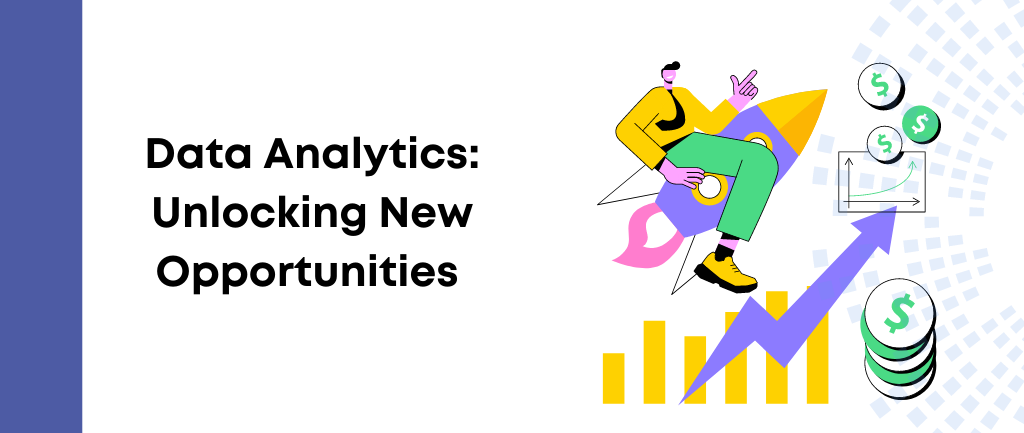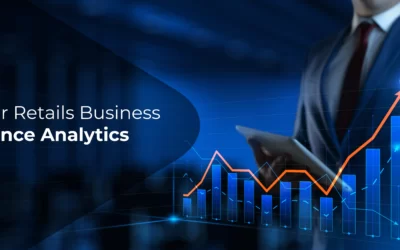
To achieve business growth with data analytics, “data” has become a vital asset for businesses across industries. The ability to harness and analyze vast amounts of data is a game-changer for companies seeking to drive growth, make informed decisions, and stay ahead of the competition. In this blog, we will explore the transformative power of data analytics for business growth, supported by real-world examples and insights.
How Data Analytics Empowers Business Growth
Data analytics involves the systematic analysis of data sets to extract valuable insights and patterns. By leveraging data analytics, businesses gain a competitive edge through enhanced decision-making, improved operational efficiency, and the identification of new growth opportunities. Let’s delve into some compelling data points that highlight the impact of data analytics on business growth:
A study conducted by McKinsey has revealed compelling statistics on the benefits of data-driven organizations. According to their findings, companies that leverage data effectively are 23 times more likely to acquire new customers, six times more likely to retain existing customers, and a staggering 19 times more likely to achieve higher profitability compared to their counterparts.
According to a recent study by Research and Markets, the global market for big data and business analytics reached a value of $294.16 billion in 2022. This market is expected to grow even further and reach a staggering $662.63 billion by 2028. This substantial growth is attributed to the increasing adoption of big data analytics software by organizations worldwide.
Companies are recognizing the importance of utilizing big data analytics to make better and faster decisions, giving them a competitive edge. By analyzing and acting upon information in a timely manner, organizations can gain valuable insights and stay ahead in the market. The surge in the adoption of big data analytics software is driven by its ability to provide enhanced decision-making capabilities and deliver a significant competitive advantage.
In a nutshell, the global market for big data and business analytics is experiencing remarkable growth as organizations realize the immense value it brings. By leveraging big data analytics, companies can gain valuable insights, make informed decisions quickly, and gain a competitive advantage in the dynamic business landscape.
Case Study: Data Analytics in an FMCG Manufacturing Industry in India
To showcase the practical application of data analytics, let’s explore a possible data analytics application in the fast-moving consumer goods (FMCG) manufacturing industry in India. As a growing FMCG manufacturer, you can leverage the potential of data analytics to optimize operations and drive business growth.
Data Collection and Integration: By implementing a comprehensive data collection system that captured real-time data from various sources, such as production lines, supply chain, and customer feedback. This data can then integrate into a centralized analytics platform for review & records.
Predictive Analytics for Demand Forecasting: By analyzing historical sales data, market trends, and external factors like seasonality, you can deploy predictive analytics to forecast demand accurately. This enables you to optimize production planning, minimize inventory costs, and improve customer satisfaction.
Quality Control and Process Optimization: With data analytics, you can monitor the manufacturing process, identify bottlenecks, and optimize quality control. By analyzing real-time data from sensors and production equipment, you can detect anomalies and take immediate corrective actions, resulting in higher product quality and reduced wastage.
Customer Segmentation and Personalization: Leveraging data analytics, you can analyse customer behavior, preferences, and purchase patterns. This helps in segmenting customers based on demographics, purchase history, and loyalty, enabling targeted marketing campaigns and personalized product offerings.
The Future of Data Analytics for Business Growth
The future of data analytics is poised to revolutionize business growth even further. Here are few vital trends to refer and determine the future of data analytics:
Artificial Intelligence (AI) and Machine Learning (ML): The integration of AI and ML technologies with data analytics will enable businesses to automate decision-making processes, detect complex patterns, and generate real-time insights. This will lead to more efficient operations, personalized customer experiences, and proactive decision-making.
Internet of Things (IoT) Integration: With the increasing prevalence of IoT devices, businesses will have access to an unprecedented amount of real-time data. Integrating IoT data with analytics will unlock valuable insights, enabling predictive maintenance, supply chain optimization, and enhanced customer experiences.
Enhanced Data Security and Privacy: As data becomes more valuable, organizations will prioritize robust security measures and adhere to stringent data privacy regulations. Innovations in data encryption, anonymization techniques, and secure data sharing will foster trust and encourage further adoption of data analytics.
Conclusion
Data analytics has emerged as a critical driver of business growth in today’s digital landscape. By harnessing the power of data, organizations can make data-driven decisions, optimize operations, and uncover new growth opportunities. Bizinso leverages its technical expertise to develop and implement data analytics and visualization solutions that drive faster business growth and enable organizations to make better-informed decisions.

